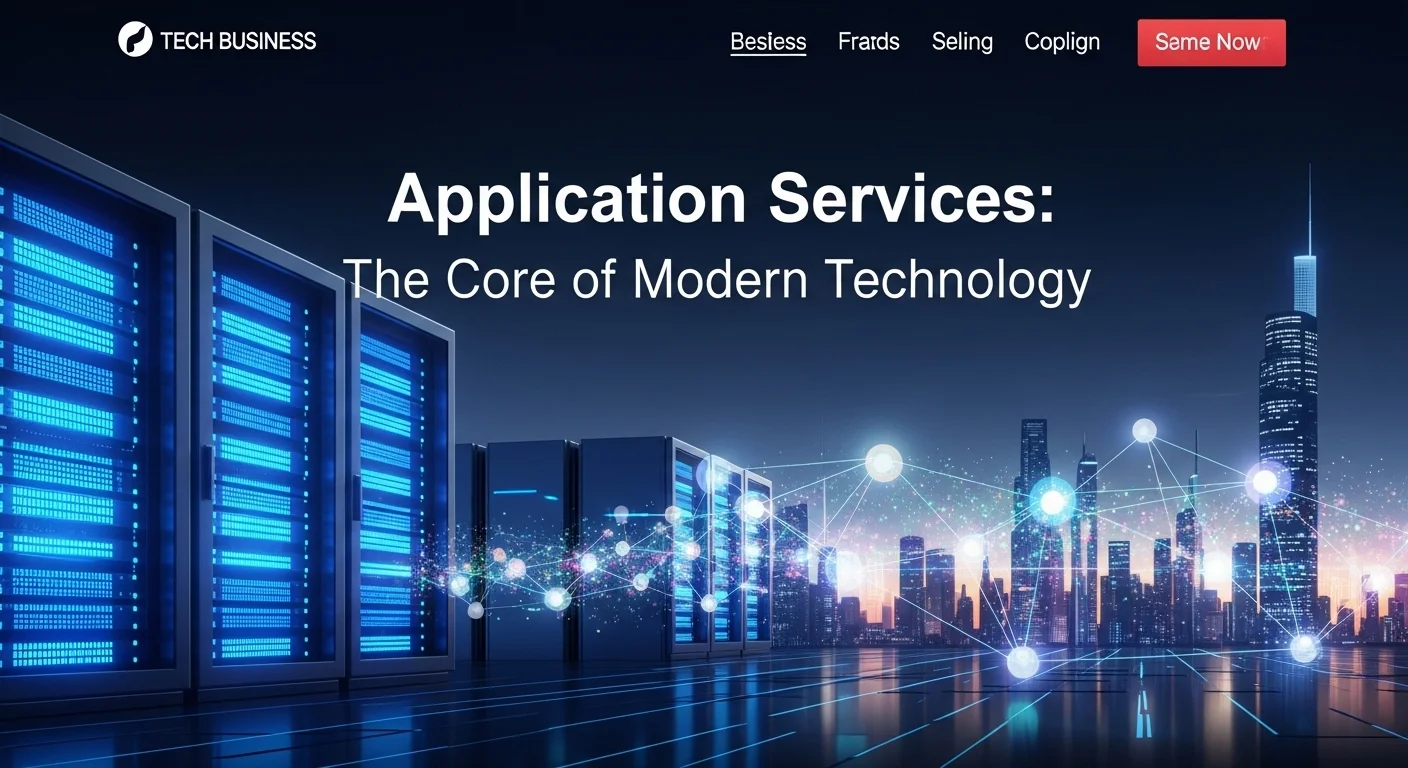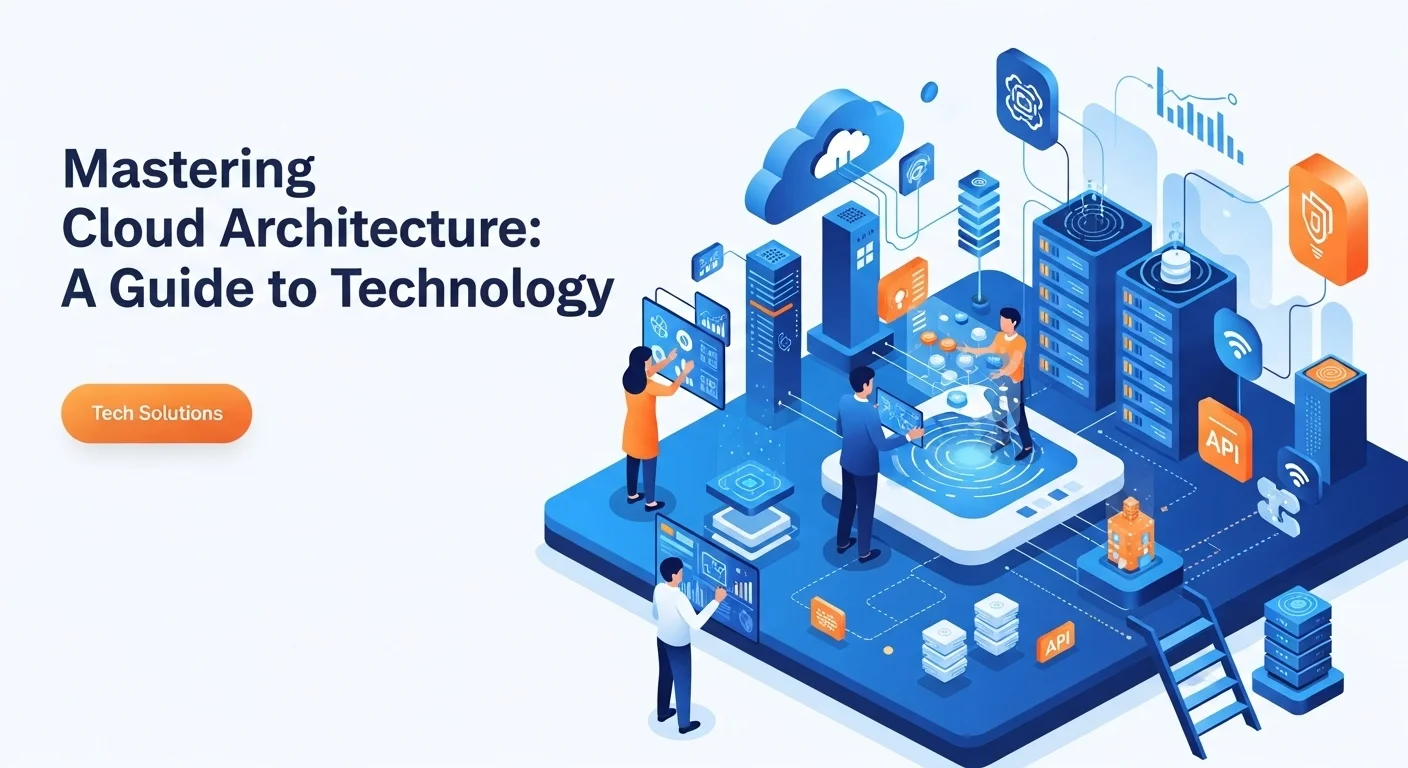Azure Services: The Core of Modern Business Technology
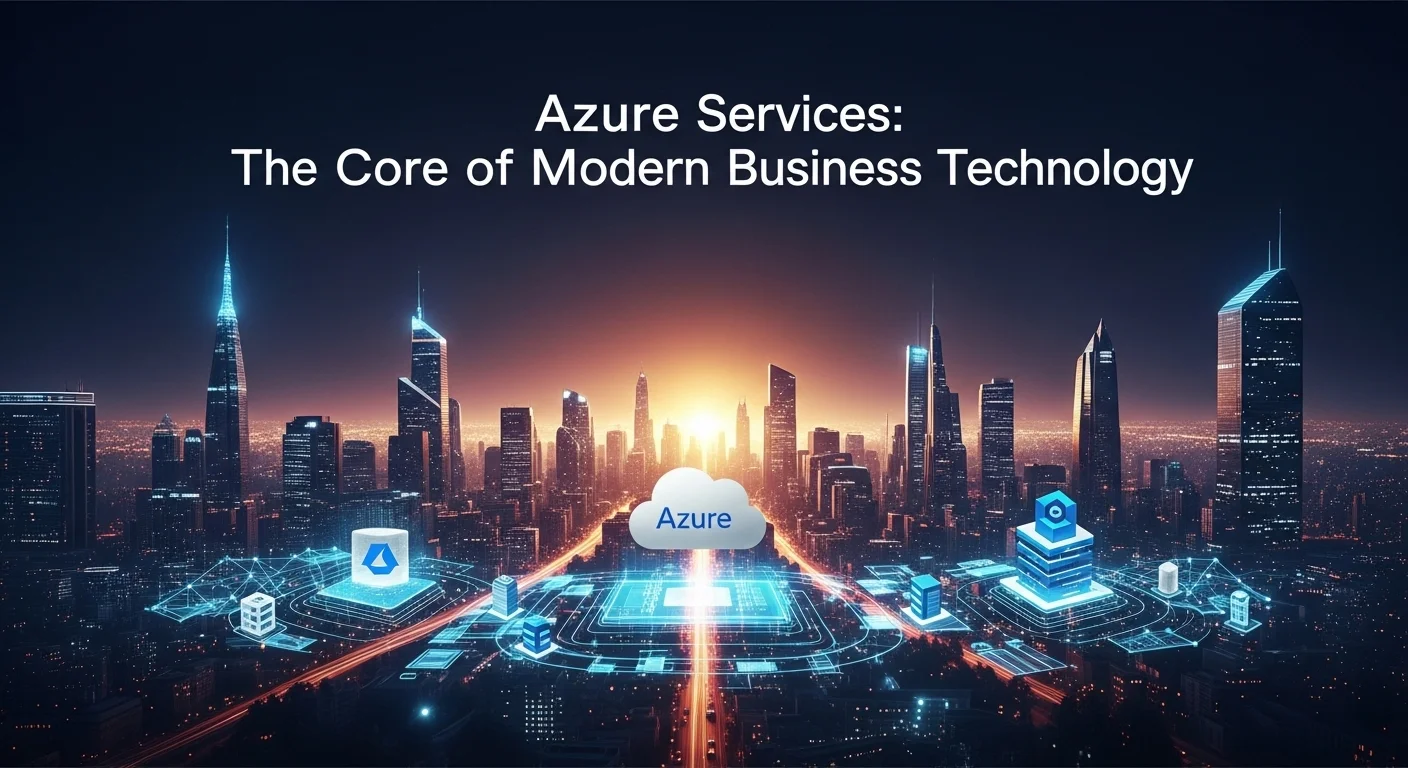
Executive Summary
In the landscape of digital transformation, Microsoft Azure has established itself as a pivotal force, offering a comprehensive suite of cloud services that empower businesses and technology enthusiasts alike. This article provides an in-depth exploration of Azure Services, detailing their significance in the realm of modern technology. We will delve into the fundamental concepts of cloud computing, including IaaS, PaaS, and SaaS models, and illustrate how Azure's robust infrastructure supports them. From scalable virtual machines and advanced data analytics to cutting-edge AI and machine learning capabilities, Azure provides the tools necessary for innovation and growth. For any organization looking to enhance operational efficiency, foster innovation, and maintain a competitive edge, understanding the vast potential of microsoft azure cloud computing services is not just beneficial, it is essential. This guide will serve as a comprehensive resource for navigating the complexities of azure cloud computing services and harnessing their power for strategic advantage.
Table of Contents
What is Azure Services and why is it important in Technology?
In today's digitally-driven world, the term 'cloud computing' has become ubiquitous, representing a fundamental shift in how businesses and developers approach IT infrastructure and application deployment. At the forefront of this revolution is Microsoft Azure, a formidable and ever-expanding cloud platform. But what exactly are Azure Services, and why have they become so critically important in the technology sector? At its core, Microsoft Azure is a cloud computing platform that offers access to over 200 products and cloud services designed to help build, run, and manage applications across multiple clouds, on-premises, and at the edge. [2] These services provide the foundational building blocks for everything from simple web hosting to complex, AI-driven data analysis. The importance of these microsoft azure cloud computing services stems from their ability to provide unparalleled flexibility, scalability, and cost-effectiveness, allowing organizations to innovate faster and more efficiently than ever before. [3, 15]
The traditional model of IT involved purchasing and maintaining physical servers and infrastructure, a capital-intensive and often inefficient process. This on-premises approach created significant barriers to entry for startups and slowed down the pace of innovation for established enterprises. The advent of cloud computing services microsoft azure completely changed this paradigm. By offering resources on a pay-as-you-go basis, Azure allows businesses of any size to access enterprise-grade technology without the massive upfront investment. [3] This model democratizes technology, enabling a small startup to leverage the same powerful computing resources as a Fortune 500 company. [23] The ability to scale resources up or down on demand ensures that businesses only pay for what they use, optimizing costs and improving operational agility. [17]
To truly grasp the importance of Azure, it's essential to understand the primary service models it offers: Infrastructure as a Service (IaaS), Platform as a Service (PaaS), and Software as a Service (SaaS). [23, 28] IaaS provides the fundamental computing infrastructure—servers, storage, and networking—on demand. This is akin to renting the hardware, giving users maximum control over the operating systems and applications. [28] Azure Virtual Machines are a prime example of IaaS, allowing you to create and manage virtual servers in the cloud. [7] PaaS, on the other hand, provides a platform that allows customers to develop, run, and manage applications without the complexity of building and maintaining the underlying infrastructure. [28] Azure App Service is a popular PaaS offering that simplifies the process of building and deploying web and mobile apps. [7] Finally, SaaS delivers software applications over the internet, on a subscription basis. Microsoft 365 (formerly Office 365) is a classic example of SaaS, though it's often seen as a separate product that integrates deeply with Azure. Understanding these models is key to appreciating how azure cloud computing services cater to a wide spectrum of needs, from IT administrators who need granular control to developers who want to focus solely on coding.
The global reach of Microsoft Azure is another cornerstone of its importance. With a network of data centers in numerous regions around the world, Azure enables businesses to deploy applications closer to their users. [3] This geographical distribution reduces latency, improves application performance, and helps organizations meet data residency and compliance requirements specific to certain countries or regions. [17] The robust, redundant infrastructure ensures high availability and reliability, minimizing downtime and providing consistent access to critical services. [3] For businesses with a global customer base, this worldwide presence is a significant competitive advantage. This vast network underpins the delivery of all microsoft azure services in cloud computing, from foundational storage to strategic AI services.
Furthermore, the integration capabilities of Azure are a massive draw for many organizations, especially those already invested in the Microsoft ecosystem. Azure seamlessly integrates with on-premises infrastructure, enabling hybrid cloud solutions that combine the benefits of both worlds. [7] Tools like Azure Arc and Azure Stack allow businesses to extend Azure management and services to their own data centers, creating a consistent experience across public and private clouds. [9, 18] This hybrid capability is crucial for industries with strict regulatory or data sovereignty requirements that prevent them from moving all their data to the public cloud. [9] It provides a practical pathway for digital transformation, allowing for a gradual and strategic migration to the cloud. The discussion around hybrid models often highlights the flexibility of microsoft azure compute services, which can be deployed in a variety of environments.
Security is a paramount concern in the digital age, and Microsoft has invested heavily in making Azure a trusted and secure platform. Azure provides multi-layered security across its physical data centers, infrastructure, and operations. [16] Services like Microsoft Defender for Cloud and Azure Active Directory offer comprehensive tools for threat detection, identity management, and access control. [4] Azure's commitment to compliance is demonstrated by its extensive portfolio of certifications, meeting a wide range of international and industry-specific standards. [17] This focus on security and compliance gives businesses the confidence to migrate even their most sensitive workloads to the cloud, knowing their data is protected by enterprise-grade security measures. This security-first approach is integral to all microsoft azure cloud computing services.
Finally, the sheer breadth of services available on the Azure platform is a testament to its importance. It's not just about virtual machines and storage. Azure offers a rich portfolio of advanced services in areas like the Internet of Things (IoT), Big Data analytics, and Artificial Intelligence (AI) and Machine Learning (ML). [15] Services such as Azure IoT Hub, Azure Synapse Analytics, and Azure Machine Learning empower businesses to unlock valuable insights from their data, build intelligent applications, and automate processes. [11, 26] For example, a retail company could use Azure AI to create personalized shopping experiences, while a manufacturing firm could leverage IoT services for predictive maintenance on its factory floor. [10] These advanced capabilities are what truly drive innovation, allowing businesses to not just improve their operations but to fundamentally transform their business models. The continuous evolution of these offerings ensures that azure cloud computing services remain at the cutting edge of technology.
In conclusion, the importance of Azure Services in technology cannot be overstated. It represents a comprehensive ecosystem for digital transformation, providing the tools, infrastructure, and advanced capabilities needed for businesses to thrive in the modern era. [21] By offering a scalable, cost-effective, secure, and globally distributed platform, the cloud computing services microsoft azure provides have lowered the barrier to innovation. Whether it's a developer launching a new app, a large enterprise modernizing its IT estate, or a researcher building complex machine learning models, Azure provides the power and flexibility to turn ideas into reality. The ongoing expansion of microsoft azure services in cloud computing ensures that it will remain a central pillar of the technology landscape for years to come, powering the next wave of digital innovation and business growth.
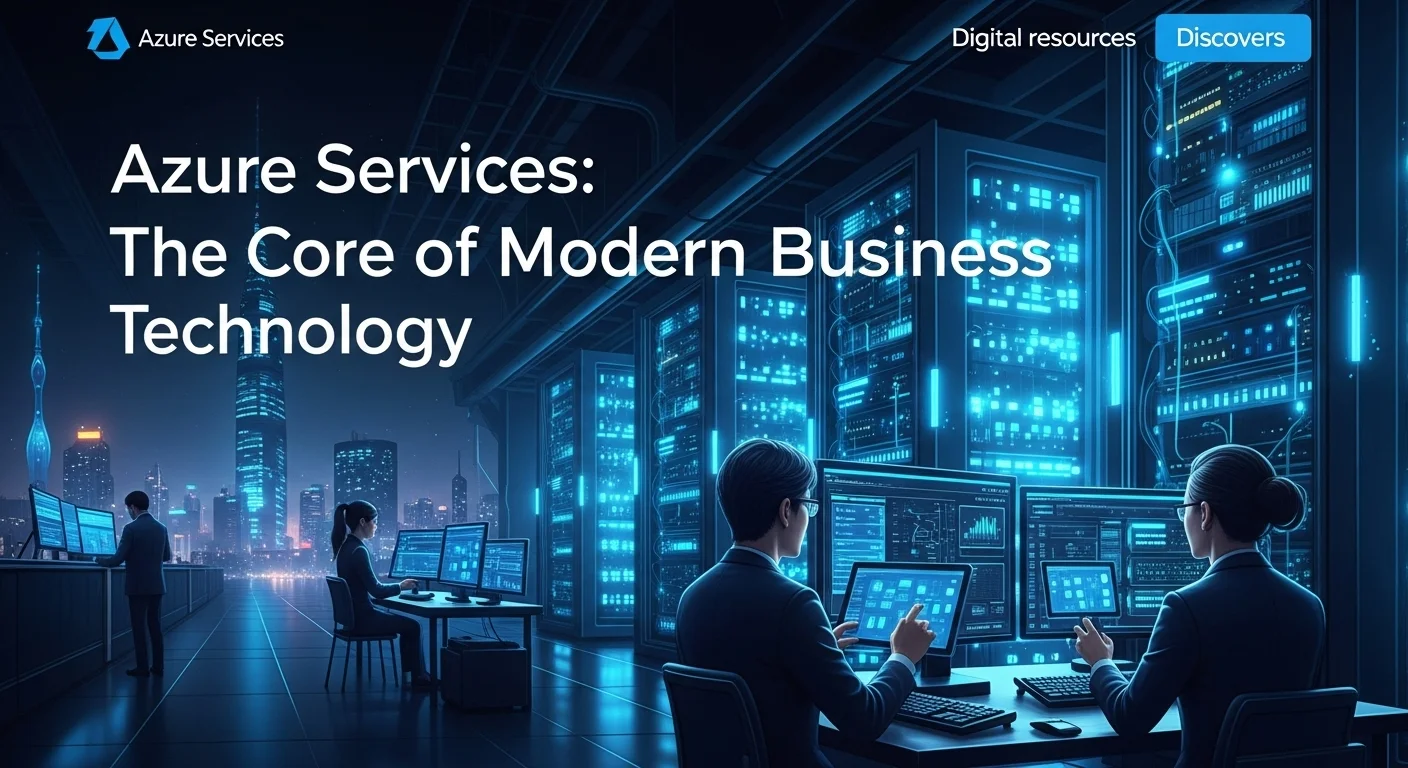
Complete guide to Azure Services in Technology and Business Solutions
Navigating the expansive universe of Microsoft Azure can be a daunting task. With over 200 services and a constantly evolving feature set, understanding which tools are right for your business needs is crucial for successful cloud adoption. [2] This guide provides a comprehensive overview of the key categories of Azure services, offering insights into their functions and business applications. By breaking down the platform into its core components, we can better understand how microsoft azure cloud computing services come together to form powerful, integrated solutions.
Core Infrastructure Services: The Foundation of Your Cloud
At the heart of Azure lies its core infrastructure services, which provide the essential building blocks for any cloud environment. These services fall under the IaaS (Infrastructure as a Service) model and give you the highest level of control and flexibility.
Microsoft Azure Compute Services: This is arguably the most fundamental category. [5] Compute services provide the processing power for your applications. The primary offerings include:
- Azure Virtual Machines (VMs): These are on-demand, scalable computing resources that can run a wide range of operating systems, including Windows and Linux. [20] VMs are ideal for 'lift-and-shift' migrations, where you move on-premises servers to the cloud with minimal changes, or for applications requiring full control over the environment. [7]
- Azure App Service: A PaaS offering designed for building, deploying, and scaling web apps and APIs. [7] It handles the underlying infrastructure, allowing developers to focus on code. It supports various languages like .NET, Java, and Python and includes features for CI/CD, auto-scaling, and deployment slots.
- Azure Kubernetes Service (AKS): A managed container orchestration service based on the open-source Kubernetes system. [38] AKS simplifies the deployment, management, and scaling of containerized applications, making it a cornerstone for modern, microservices-based architectures.
- Azure Functions: A serverless compute service that allows you to run event-triggered code without having to explicitly provision or manage infrastructure. [2] This is perfect for building event-driven applications and can be incredibly cost-effective, as you only pay for the compute time you consume.
Azure Networking Services: Secure and reliable networking is critical for connecting and protecting your cloud resources. Key services include:
- Azure Virtual Network (VNet): This allows you to create an isolated network within Azure, similar to a traditional on-premises network. [4] You can define subnets, route tables, and network security groups to control traffic flow and secure your resources.
- Azure Load Balancer: Distributes incoming network traffic across a group of backend resources or servers, ensuring high availability and reliability for your applications.
- Azure VPN Gateway & ExpressRoute: These services provide secure connectivity between your on-premises network and your Azure VNet. VPN Gateway uses the public internet, while ExpressRoute offers a private, dedicated connection for higher security and reliability. [40]
Azure Storage Services: Azure provides a variety of scalable and secure storage solutions for different data types:
- Blob Storage: Optimized for storing massive amounts of unstructured data, such as text, images, and videos.
- File Storage: Offers fully managed file shares in the cloud that are accessible via the standard Server Message Block (SMB) protocol.
- Disk Storage: Provides high-performance, persistent block storage for Azure Virtual Machines. [4]
- Table Storage: A NoSQL store for structured, non-relational data.
Data and Analytics: Turning Information into Insight
The ability to store, manage, and analyze vast amounts of data is a key driver of business value. The azure cloud computing services in this domain are extensive and powerful.
Database Services: Azure offers a wide range of managed database services to suit different application needs, from relational to NoSQL.
- Azure SQL Database: A fully managed relational database-as-a-service (DBaaS) based on the Microsoft SQL Server engine. [7] It offers features like automatic backups, high availability, and built-in intelligence for performance tuning. [34]
- Azure Cosmos DB: A globally distributed, multi-model NoSQL database service. [12] It's designed for applications that require low-latency access to data from anywhere in the world, offering turnkey global distribution and elastic scalability. [42]
- Azure Database for MySQL, PostgreSQL, and MariaDB: Fully managed services for popular open-source relational databases, making it easy to migrate existing applications to Azure. [12]
Analytics Services: These services help you process and analyze data to uncover business intelligence.
- Azure Synapse Analytics: An integrated analytics service that brings together enterprise data warehousing and Big Data analytics. It allows you to query data on your terms, using either serverless or dedicated resources at scale.
- Azure Data Factory: A cloud-based data integration service that allows you to create, schedule, and orchestrate your data processing workflows. [13]
- Azure Stream Analytics: A real-time analytics and complex event-processing engine designed to analyze and process high volumes of fast-streaming data from sources like IoT devices or social media feeds. [11]
- Power BI Embedded: Allows you to embed interactive reports and dashboards directly into your applications, providing rich data visualizations to your users. [13]
AI + Machine Learning: Building the Next Generation of Intelligent Apps
Microsoft has heavily invested in democratizing artificial intelligence. The cloud computing services microsoft azure offers in this space are designed to be accessible to developers without deep data science expertise.
- Azure Machine Learning: An enterprise-grade service for the end-to-end machine learning lifecycle. [13] It provides tools for data scientists and developers to build, train, and deploy ML models at scale. [15]
- Azure AI Services (formerly Cognitive Services): A collection of pre-built APIs that allow you to add intelligent capabilities like vision, speech, language, and decision-making to your apps. [13, 26] For example, you can use the Computer Vision API to analyze images, the Speech service for real-time transcription, or the Language service for sentiment analysis. [44]
- Azure Bot Service: Provides an integrated environment for building and deploying intelligent bots that can interact with users in a conversational manner across various channels. [26]
Security and Identity: Protecting Your Digital Assets
Security is a shared responsibility in the cloud, and Azure provides a robust set of tools to help you secure your applications and data.
- Microsoft Defender for Cloud: A unified cloud security posture management and cloud workload protection platform. It provides security recommendations, threat detection, and vulnerability assessments across your hybrid cloud workloads. [18]
- Azure Active Directory (Azure AD): A comprehensive identity and access management solution. [4] It provides single sign-on (SSO), multi-factor authentication (MFA), and conditional access policies to protect against unauthorized access.
- Azure Key Vault: A secure store for managing and protecting cryptographic keys, certificates, and secrets used by your cloud applications and services. [19]
This guide only scratches the surface of the vast portfolio of microsoft azure services in cloud computing. From IoT to DevOps, and from media services to hybrid cloud solutions, Azure provides a comprehensive platform to support nearly any business or technological goal. The key to success is to start with a clear understanding of your requirements and then select the appropriate combination of these powerful services. By leveraging the right tools, businesses can build scalable, resilient, and intelligent solutions that drive innovation and deliver a competitive advantage. The continuous integration of new features ensures that the platform of microsoft azure compute services and related offerings remains a leader in the technology industry.
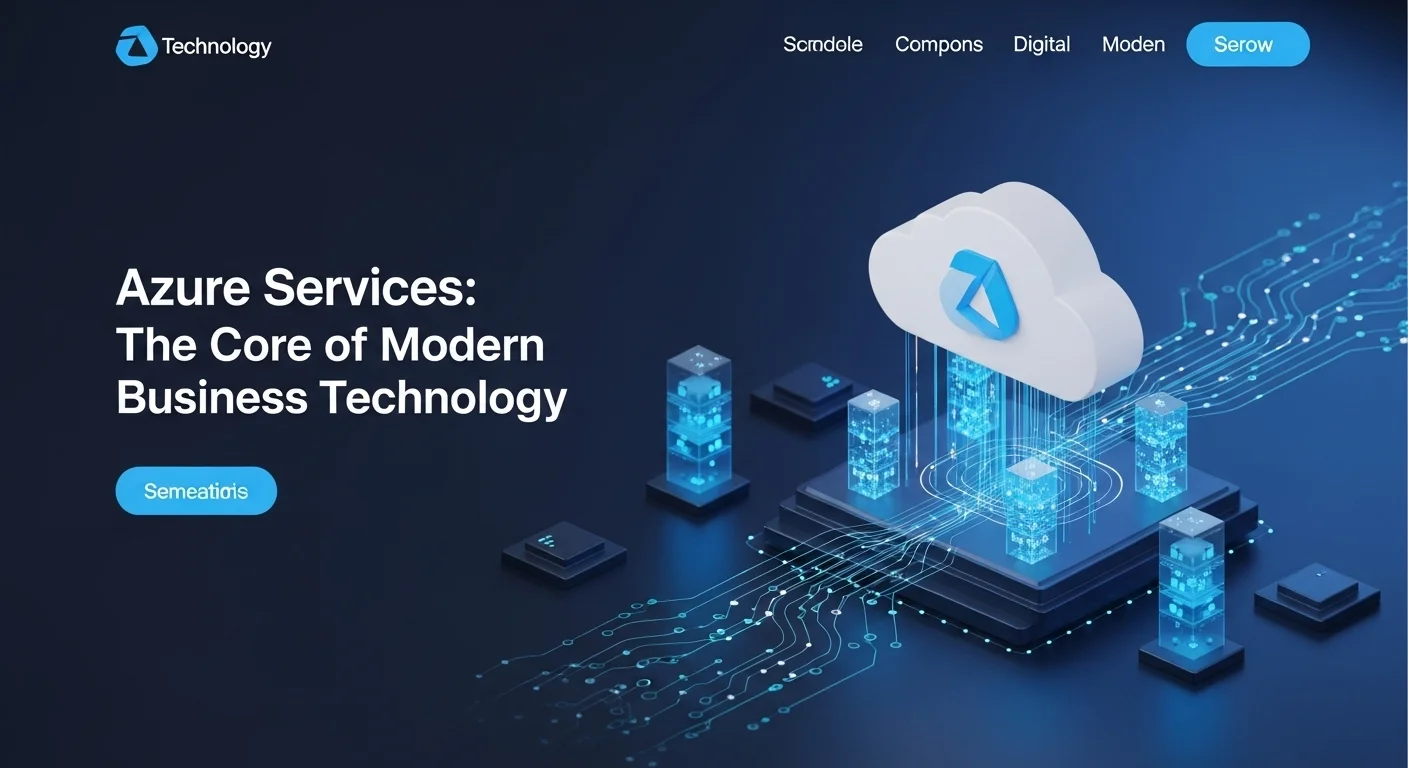
Tips and strategies for Azure Services to improve your Technology experience
Adopting Microsoft Azure is more than just a technical migration; it's a strategic move that can redefine how your business operates. However, to truly harness the power of the platform and achieve a positive return on investment, it's crucial to implement best practices and adopt effective strategies. This section provides practical tips and strategic guidance for using azure cloud computing services to enhance your technology experience, optimize costs, and bolster security. By moving beyond basic implementation and focusing on strategic management, you can unlock the full potential of your cloud environment.
1. Master Cost Management and Optimization
Cloud costs can quickly spiral out of control if not managed properly. A proactive approach to cost management is essential for any organization using Azure.
- Utilize Azure Cost Management + Billing: This is your central hub for monitoring, analyzing, and optimizing your Azure spend. [22] Use its tools to set budgets, create alerts for when spending approaches thresholds, and analyze cost patterns to identify areas of high expenditure. [43] Gaining visibility into where your money is going is the first step toward controlling it.
- Right-Size Your Resources: One of the most common sources of wasted cloud spend is overprovisioning. [8] Regularly review the utilization of your resources, especially microsoft azure compute services like Virtual Machines. If a VM is consistently underutilized, resize it to a smaller, more cost-effective instance. [43] Azure Advisor provides personalized recommendations for right-sizing resources based on your usage data. [8]
- Leverage Azure Reservations and Savings Plans: For workloads with predictable, long-term usage, committing to Azure Reserved Instances (RIs) or Azure Savings Plans can offer significant discounts—up to 72% compared to pay-as-you-go pricing. [22] Analyze your usage patterns to identify stable workloads that are good candidates for these pricing models.
- Implement Automation for Shutdowns: Development and test environments often don't need to run 24/7. Use automation scripts or Azure's built-in features to shut down non-essential resources during off-hours, such as nights and weekends. This simple practice can drastically reduce the server time you pay for. [27, 43]
- Optimize Storage Costs: Data storage is another area where costs can accumulate. Implement lifecycle management policies in Azure Blob Storage to automatically move data to cheaper storage tiers (e.g., from Hot to Cool or Archive) as it becomes less frequently accessed. [22] Also, regularly clean up orphaned disks and old snapshots.
2. Prioritize Security and Governance from Day One
Security in the cloud is a shared responsibility. While Microsoft secures the underlying infrastructure, you are responsible for securing your data and applications within it. A strong security and governance posture is non-negotiable.
- Implement a Zero Trust Model: Assume breach and verify explicitly. Use Azure Active Directory (Azure AD) to enforce strong identity controls. Mandate Multi-Factor Authentication (MFA) for all users, implement the principle of least privilege with Azure Role-Based Access Control (RBAC), and use Conditional Access policies to control access based on user, location, and device risk.
- Use Microsoft Defender for Cloud: This tool is essential for maintaining your security posture. It provides continuous security assessments of your Azure resources, offers actionable recommendations to fix vulnerabilities, and delivers advanced threat protection to detect and respond to attacks on your cloud computing services microsoft azure provides. [18]
- Govern Your Environment with Azure Policy: Azure Policy allows you to create, assign, and manage policies to enforce rules and conventions across your Azure resources. You can use it to restrict which VM sizes can be deployed, enforce tagging requirements, or ensure that resources are only deployed in specific geographic regions. This is key to maintaining control and compliance at scale. [18]
- Encrypt Everything: Protect your data both at rest and in transit. Azure provides various encryption options, including Transparent Data Encryption for databases and Azure Disk Encryption for VMs. Ensure all traffic to your public-facing applications is encrypted using SSL/TLS.
3. Develop a Smart Migration and Modernization Strategy
Moving to Azure isn't just about 'lifting and shifting' your existing servers. It's an opportunity to modernize your applications and infrastructure.
- Start with a Thorough Assessment: Before migrating anything, use tools like Azure Migrate to discover and assess your on-premises workloads. [14, 29] This tool helps you understand dependencies between servers, assess their readiness for the cloud, and estimate the cost of running them in Azure. [36]
- Choose the Right Migration Strategy: Not all applications are the same. Consider different strategies for each workload:
- Rehost (Lift-and-Shift): Move the application as-is to an Azure VM. This is the fastest approach but may not be the most cost-effective or efficient in the long run. [36]
- Refactor/Re-architect: Make some changes to the application to better leverage cloud-native features. This could involve containerizing an application to run on AKS or modifying it to use a PaaS database like Azure SQL Database. [36]
- Rebuild/Replace: Decommission the existing application and build a new one using cloud-native services (e.g., serverless functions, PaaS) or replace it with a SaaS solution.
- Embrace a Hybrid Approach with Azure Arc: For many organizations, a hybrid reality will persist for years. Azure Arc extends Azure's management plane to your on-premises and even other cloud environments. [9, 40] This allows you to manage your servers and Kubernetes clusters, wherever they reside, using familiar Azure tools like Azure Policy and Microsoft Defender for Cloud, creating a single pane of glass for governance and security. [18, 30]
4. Leverage Quality External Resources and Continuous Learning
The cloud landscape is in a constant state of flux. Staying current is crucial for making the most of microsoft azure services in cloud computing. Encourage your team to engage with official documentation and learning platforms. A great starting point for structured learning and deep dives is the Microsoft Learn for Azure platform, which offers free courses, learning paths, and hands-on labs.
By adopting these tips and strategies, your organization can move from being a simple consumer of azure cloud computing services to a strategic user. This proactive, informed approach will not only improve your technology experience but also ensure that your investment in the cloud delivers tangible business value, driving innovation, efficiency, and growth.
Expert Reviews & Testimonials
Sarah Johnson, Business Owner ⭐⭐⭐
The information about Azure Services is correct but I think they could add more practical examples for business owners like us.
Mike Chen, IT Consultant ⭐⭐⭐⭐
Useful article about Azure Services. It helped me better understand the topic, although some concepts could be explained more simply.
Emma Davis, Tech Expert ⭐⭐⭐⭐⭐
Excellent article! Very comprehensive on Azure Services. It helped me a lot for my specialization and I understood everything perfectly.


